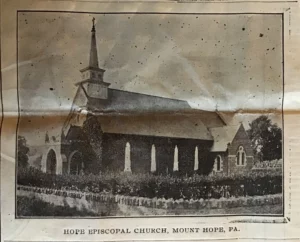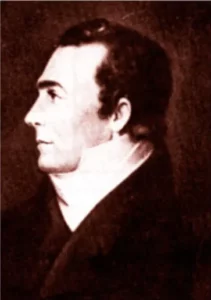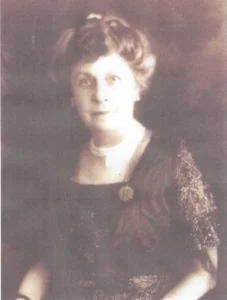The Grubb Family Connection
at Hope Episcopal Church
More history:
The story of Hope Church would not be complete without at least an abbreviated history of the Grubb family who came to America to escape religious persecution, made their fortune creating an iron empire in eastern Pennsylvania that prospered under the leadership of five successive generations for over 150 years, and shared that fortune with the community by first building Hope Church then expanding and renovating it and finally leaving a trust for future generations of the congregation.
The history of Hope Church is integrally linked to the Grubb family and begins with the immigration of John Grubb (1652-1705). John and his brother Henry were born in Cornwall, England. Henry had been imprisoned several times for his Quaker beliefs and had little chance to establish himself in his home village. So the two brothers set sail for America on the first ship of settlers organized by William Penn and settled in the lower counties of the Pennsylvania province (now Delaware) in 1667.
In 1734, John’s youngest son, Peter, came to the local area. He was a stone mason by trade, but entered the iron manufacturing business after discovering the rich, vast deposit of iron ore in southern Lebanon County in 1737. In 1742, he built the highly successful Hopewell Forge and the Cornwall Iron Furnace. The next five generations of the family grew the iron business, and were key suppliers of munitions to the Continental Army during the American Revolution and to the United States during the Civil War. Property and holdings split among the heirs numerous times as the business passed from generation to generation of the Grubb family. By the 1840 – 1870 era, the Grubb Family Iron Dynasty was the leading iron manufacturer in Pennsylvania.
The third generation of the Grubb Family Iron Dynasty was led by Henry Bates Grubb (1774-1823). Henry was the founder of the family’s enterprises at Mount Hope. He rebuilt the family business after most of the original Peter Grubb holdings were acquired by Robert Coleman between 1783 and 1802. Henry began construction of the mansion and formal gardens at Mount Hope in 1800. Various out buildings including Hope Church were added over time. The mansion and gardens were completed in 1805 and Henry’s Mount Hope Estate became the headquarters of the family’s iron manufacturing empire. After his first wife died, Henry married Harriett Amelia Buckley in 1808, and together they had five children. After his death in 1823, Harriet and her children managed the estate until her death in 1858. It was during this period that Harriet supervised the building of a church on the estate and named it Hope Church. The church was completed in 1849 at a cost of about $2000. This original building is the nave of the current church. In 1885, Clement Brooke Grubb and Mary Brooke Grubb presented the Hope Church property to the Diocese of Pennsylvania. Prior to 1885, the church had been supported entirely by the Grubb family.
Fast forward to the fifth generation of the Grubb family with Henry’s granddaughter, Daisy Elizabeth Brooke Grubb (1850 – 1936). Upon the death of her father, Clement Grubb in 1889, Daisy inherited substantial property (the Mount Hope Estate, her father’s mansion in Lancaster and a townhouse in Philadelphia) and holdings worth about $6,000,000. She sold most of the industrial holdings in 1902.
As a young woman in the Victorian era, Daisy was engaged to be married but before the wedding her fiancé was tragically killed in a hunting accident. Daisy never married. She lived her life as a wealthy socialite and was the last of the Grubb family to live at the estate.
Daisy was an avid student of the arts and spent time expanding the estate mansion from a 12 room Federal style home to a 32 room Victorian manor, which is today home of the Mount Hope Estate and Winery and the Pennsylvania Renaissance Faire. She was also involved in numerous community projects, especially those involving children’s causes.
At the turn of the century, Daisy managed significant expansion and renovations to Hope Church, adding the chancel, sacristy, narthex and baptistry. In a lasting act of kindness and charity, Daisy also provided funds for the future of the church through the Grubb Trust.




